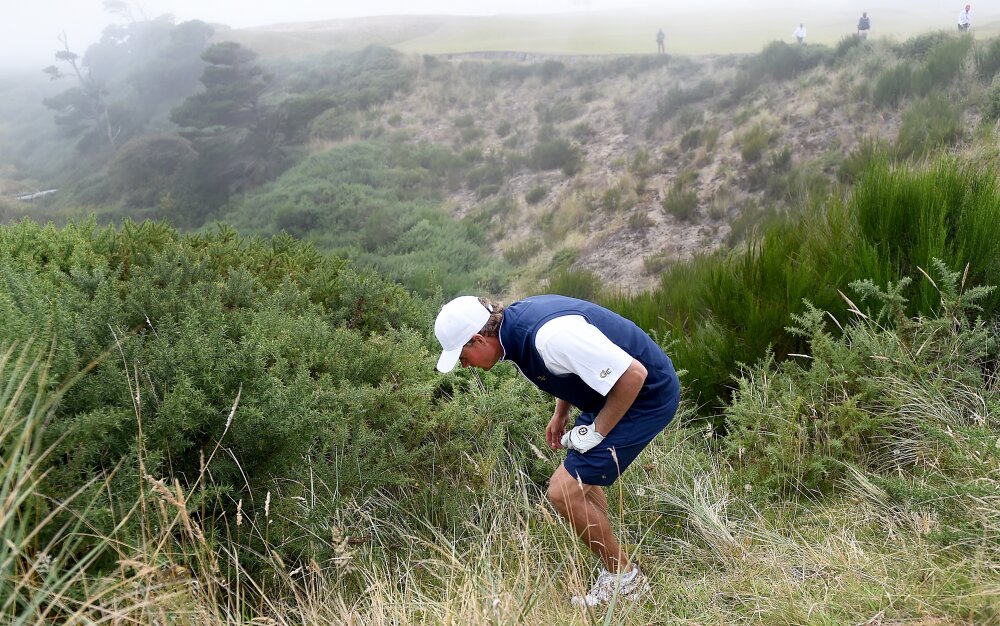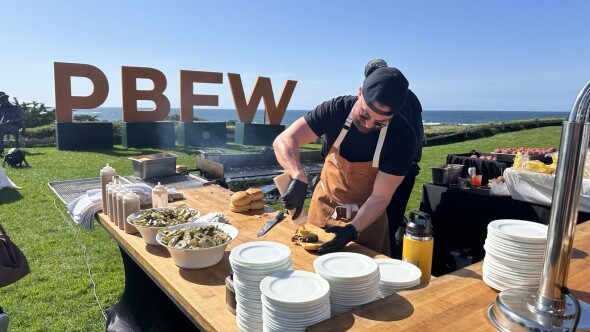As much as we all love the drama of watching a major championship on television, I'd argue that the U.S. Amateur is just as compelling, if not more so.
The U.S. Am brings three elements to the table that not even a major can replicate: 1) It can be contested on courses we rarely see on TV; 2) The ebb and flow of match play can be uniquely thrilling; and 3) We get to see amateurs who are great players, but they still make mistakes more in line with our weekend blunders than the robotic man-machines of the PGA Tour. All of these factors made the 2020 U.S. Amateur at Bandon Dunes Golf Resort so enjoyable this past weekend.
Bandon Dunes, which has hosted multiple USGA events since 2006, didn't disappoint in its latest moment in the spotlight. The original links course by David McLay Kidd looked demanding enough to host The Open. The changing winds and weather kept the players uncomfortable. The grueling week-long competition even had a storybook ending: Tyler Strafaci, 22, of Davie, Fla., won 85 years after his grandfather, Frank Strafaci Sr., won the 1935 U.S. Amateur Public Links.
The fifth-year Georgia Tech senior rallied from an early 5-down deficit to defeat Southern Methodist University rising junior Charles “Ollie” Osborne, 20, of Reno, Nev., 1 up, in the 36-hole championship match Sunday. Strafaci almost turned pro earlier this year, but the coronavirus changed the timeline of that decision. His rewards are invitations to The Masters and the U.S. Open, two majors probably out of reach for a rookie pro, and a place on the 2021 U.S. Walker Cup team that will face Great Britain and Ireland May 8-9 at Seminole Golf Club in Juno Beach, Fla. It's funny how life works sometimes.
Looking back, a few moments from the semifinals and final over the weekend stand out that could teach us all a thing or two about the game. These five takeaways aren't earth-shattering, more subtle reminders how to handle the many curveballs that golf throws at you.
It's okay to be human

Perhaps the best lesson to be learned from the U.S. Amateur is this: 98 percent of the golfers on the planet are just like you and me. They might be more talented, but they still make poor decisions on club selection and fail to execute shots under pressure. I convinced a friend who is new to golf to watch, and he told me that it was refreshing to see players on TV make mistakes. He was so used to watching PGA pros throwing darts and winning tournaments at 21-under that he didn't realize just how human great players can be. TV coverage never shows the guys who aren't making the cut, or the shanks that Webb Simpson has been known to hit. Watching elite college players - some potential future pros - miss greens with wedges, blow drivers over a cliff and three-putt was a refreshing reminder that to err is human, especially on the golf course.
Don't ever give up
This applies to both match play and stroke play. Momentum is such a big thing in golf. When you're playing well, things seem so simple. When you're struggling, little errors multiply exponentially. Strafaci was on the winning end of a comeback and a near collapse - almost losing a huge 4-up lead to Oklahoma State's Aman Gupta in the semifinal round, then overcoming a 5-down deficit in the final. He won both matches with clutch second shots on no. 18.
“He’s a stud,” Stewart Hagestad said of Strafaci after losing in their quarterfinal match, “but I think what makes him a lot better than maybe other amateurs and collegiate golfers is he has an incredible level of maturity.”
While watching on TV, my friend also took note of how Matthew Sharpstene reacted once he got down in his semifinal match against Osborne, slumping his shoulders and walking with his head down. A smile never crossed his face the last hour of the match. That type of body language can defeat you long before your opponent does.

Just putt it
Three doubles and a triple. Sound like scores from your Saturday foursome? No, that's what the four semifinalists carded Saturday at No. 15, a treacherous par 3 that wreaked havoc all weekend. The sad thing was, all Gupta (against Strafaci) and Sharpstene (against Osborne) had to do was putt the ball onto the green from tricky greenside surrounds to virtually guarantee winning the hole. Instead, both made a mess of delicate pitch shots. Obviously, anybody in that situation should play their own game and hit the shot that feels comfortable, but the percentage plays were to hit the green at all costs, and that meant using the putter.
A bunker no-no (part 1)
Wow, did the bunkers at Bandon Dunes play a huge role in Strafaci's victory. In his Thursday match, his opponent's caddie touched the sand in the greenside bunker at 18 to test it with the match all square. It resulted in loss of hole for Segundo Oliva Pinto and ultimately, a forfeiture of the match.
It all came down to the 18th hole.
— Golf Channel (@GolfChannel) August 14, 2020
And then this happened.
The outcome? A 1 up win for Tyler Strafaci. #USAmateur pic.twitter.com/JFJcoSKfFQ
What a hard lesson for any player or caddie to learn: Never touch the sand in a bunker. Ever.
A bunker no-no (part 2)
I was certain Gupta was going to win the semifinal when he walked to the 18th tee. He had just won the two previous holes, and looked confident and in command, despite the match being tied. Then he found a deep fairway bunker on no. 18, a reachable par 5. That sin was forgivable. What he did in that bunker was not.
Trying to get too much out of the shot, Gupta's first attempt out of the sand pounded the lip in front of him, keeping the ball in the bunker. At that point, he should have changed clubs, going with a higher lofted club to make sure he escaped to give himself a chance to get up and down for par and extend the match. Instead, he did it again, blading a shot too low to clear the bunker face. The third attempt got out, but I still believe he should have stepped out of the bunker, composed himself and probably changed clubs. A hard lesson to learn at a critical time in his life. My philosophy in bunkers has always been the same: "When in doubt, just get it out."
What lessons did you take away from watching the U.S. Am? If you didn't watch, will you in the future? Let us know in the comments below.












There is a "bump and run" practice area at Bandon Dunes ranges. Obviously, none of the "air to air" players who appeared on TV coverage spent much, if any, time there. Bandon is a golf course they are not used to playing. It mimics most of the links in Scotland and Ireland where you learn to play "along the ground." That said, this was really exciting golf and a classic example of the excitment match play can generate. Great coverage and I thought Justin Leonard did well as a commentator.
My hope is having tournaments without fans in 2020 will elevate the TV component and lessen the need to admit 30,000+ spectators into every Major. In a post-Covid world, admitting fewer fans could allow more out of the way or more environmentally sensitive courses to host Majors. Wouldn’t it be great to see a PGA at Pacific Dunes? Seems possible if the on-site spectator requirements are lessened.
Match play is "real" competitive golf but totally impractical on the week in week out pro tour. The only downer from a spectators standpoint, that I have appreciated is that the last three holes of many great course are well designed challenges demanding strong, thoughtful shot making. Sadly match play most often finishes before the course does. Bravo to USGA and one of my favorite spots in the world - Bandon Dunes.
The US Am was compelling in so many ways- Bandon was a fantastic setting both visually and strategically causing many indecisions and bad decisions.
The caddy that touched the sand was a Bandon house caddy. No way Bandon should have put out a caddy in this event who didn’t know the rules.
Strafaci had the better daddy-caddy. Ollie blowing his tee shot over the last par 3 green was the deciding mistake. That was a huge miss club. You can’t go long to a back pin.